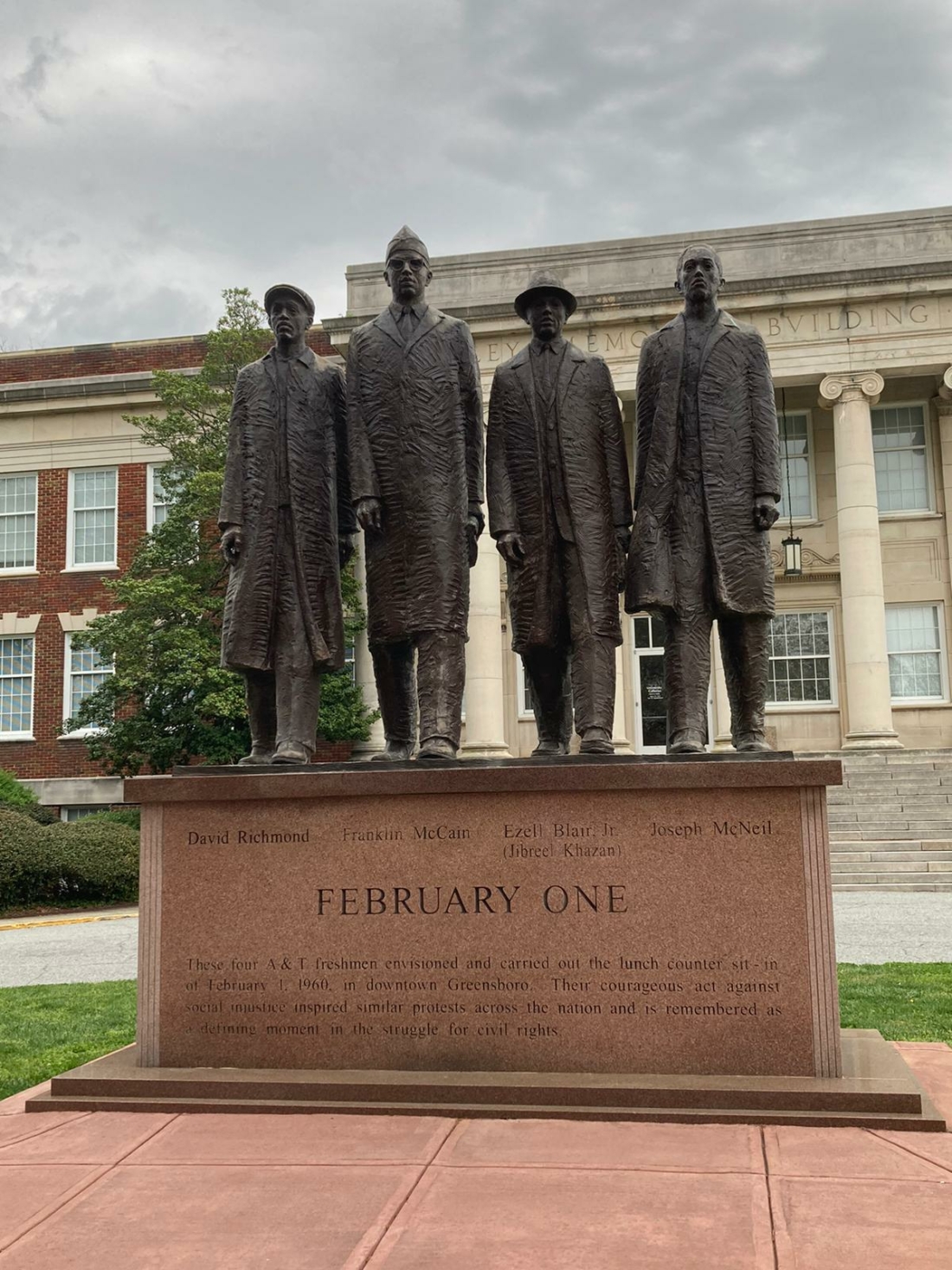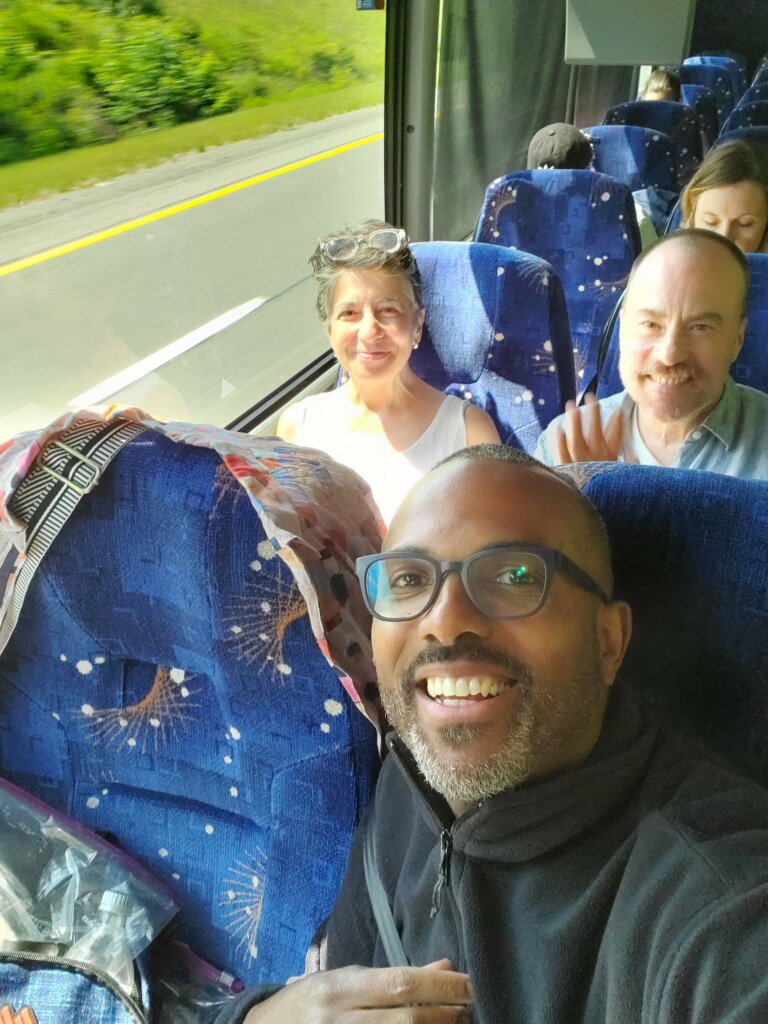The day was full and in the best way: we left our school year behind and 22 of us shared a bus drive toward Greensboro, North Carolina and the International Civil Rights Center and Museum. I travelled with the nagging truth that I only knew a general sense of the importance of the Greensboro Four but not the full story of February 1, 1960. Why there? Why them? Why not after the earlier sit ins of the 30s and the one in 1941 in Chicago with James Farmer? What occurred before the college young men went to the Woolsworth counter that first day? How did sitting at a counter mean so very much? How could the event be so symbolic that it made young people risk their lives and grown people loose their minds?
The tour with Sage, one of two brilliant museum guides, narrated the story of the events that brought out the context, and I was reminded of my students during the Black Lives Matter protests that pandemic year. I sensed the embodied bravery and righteous defiance that courses through young people. I recognized the outrage students feel for the madnesses of our racist and violent world, with the gun control and abortion debates, with what “laws” they inherit that don’t make ethical or rational sense.
The segregated fountains and counters of the pretty Greensboro district was the mechanism of the silent curriculum of white supremacy that refuses to tolerate resistance, nonviolent, from college and high school students who are transforming into the adults they want to be.
I am amazed at how in my body I now feel what the rise of a collective righteous movement does to one’s own sense of agency in the world.



